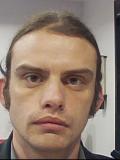Victor Buridon

Victor Buridon
Victor Buridon works as a post-doc in Institut Laue Langevin, Grenoble on the R&D of the Multi-Grid demonstrator in collaboration with ESS. He finished his master in subatomic physic at Université Lyon 1 (UCBL, by an internship in theoretical physic in the fields of nuclear matter and Many-Bodies problem. He also did a PhD in Institut de Physique Nucléaire de Lyon (IPNL). Then, he spent 2 years as a post-doc at IPNL, where he was in charge of three projects including Glass Resistive Plate chambers (GRPC) technology: ILC for high-energy physic applications (CALICE), GIF++ for CMS upgrades (CERN) and TOMUVOL for the muography of volcanoes (LPC, Clermont-Ferrand).
- In BrightnESS, I work on the R&D of the Boron Multi-Grid detector. My task consists of developing the prototype according to the operating and technical specifications required for its future use. This job follows the tasks, which I have done in my previous jobs about understanding the needs associated to the future use of the prototype. For this, it is necessary to physically characterize the detector in terms of geometry, electronic readout, and gas systems to have access/an idea to its detection efficiency, spatial resolution, and stability. Therefore, I do many tests on IN6 and MG12 demonstrators at different experimental conditions in order to define its technical characteristics and to know if it respects the defined needs.
The group Service des Détecteurs de Neutrons (SDN) of ILL works with ESS in the production of Multi-Grid detectors. What I like on this project is the capability to work together by taking account the skills of the different members. I like to share my skills in other fields of particle physic with the other members of BrightnESS in order to develop a common achievement and to increase my knowledge in engineering and experimental physics according to the neutron physic.
There are many challenges in BrightnESS, as the capability of a detector to withstand a long-term operation in a harsh radiation environment. This challenge is similar the ones I met on the GIF++ project. For this, detectors built should prove their capabilities to be supported in priority for the first instruments of ESS. The technical challenge is to arrive to produce and characterize a detector, which respects the operating and technical specifications needed by taking account the deadline fixed.
I think BrightnESS can contribute to low energy neutron research (2.6 Angströms). We can build competitive detectors in terms of malleability and cost better than the ones using He3 technology. We show the capability of this technology to reach a good detection efficiency and spatial resolution. Moreover, tests show that Multi-Grid detectors were operated with a low internal gas pressure, adaptive to the time of flight experiences. Besides, tests on the rapidity of signals show that this technology can be used for higher rate experiences by reducing the internal gas pressure and the integration time of amplifiers used. Finally, developments done on localization algorithms adaptive to electronic readout demonstrated that the Multi-Grid prototypes could improve their spatial resolution even at low internal gas pressure.

 is funded by the European Union Framework Programme for Research and Innovation Horizon 2020, under grant agreement 676548.
is funded by the European Union Framework Programme for Research and Innovation Horizon 2020, under grant agreement 676548.